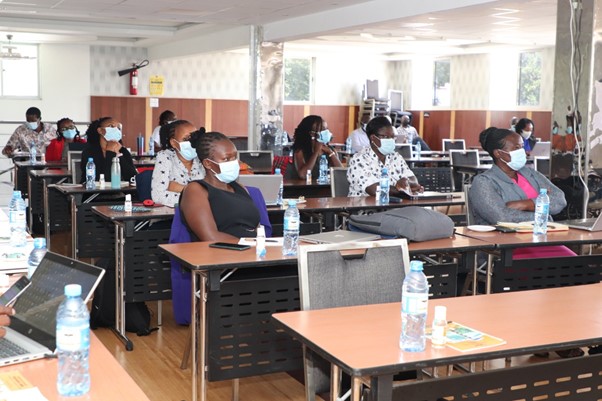
Brenda Mungai is an IMPALA PhD student, studying the role of operational modelling in policy making using chest X-ray (CXR) in tuberculosis (TB) screening and diagnostic algorithms as a case study. On the 24th May 2021, Brenda presented her work at the Kenya National TB, Leprosy and Lung disease program annual report writing workshop. She reflects on the workshop and the role of operational modelling in future policy making.
Operational modelling using the Witness package, a visual and interactive modelling tool is able to project health system and patient impacts of introducing new diagnostic algorithms. This has been demonstrated to aid policy makers in the decision making process.
As part of my PhD study, I developed an operational model using Witness, to assess the impact of scale up of CXR in different triaging and diagnostic algorithms. The operational model was to address the overarching question of what is the optimal position in the diagnostic pathway in Kenya. The model inputs included findings from the prevalence survey, World Health Organization (WHO) guidance on CXR use in TB models, expert interviews, TB program data and literature review.

On 24th of May 2021, I had a session to present the operational model to TB stakeholders in Kenya during the Kenya National TB, Leprosy and Lung disease program (NTLDP) annual report writing workshop in Nakuru, Kenya. The participants present included NTLDP officers (including sectional heads of the monitoring and evaluation department, and the diagnostic department) as well as some implementing partners. During the session, I gave an overview of operational modelling and its usefulness. I then shared the findings of the study and proposed role in policy making.
The presentation generated rich discussions with feedback of a resounding yes, that, the modelling could play a role in the policy making process in Kenya. There were suggestions on use during the data synthesis and formulation stages of the policy making process. Some stakeholders felt this was important across the health sector and suggested a similar sensitisation to the research unit at Ministry of Health headquarters. There were also requests to see if we can do modelling for the TB preventive therapy uptake and the active case finding models.
This was a validation meeting as well as understanding the stakeholder perspectives on the utility of modelling in policy making. We collected the views that will be captured in the chapter on how operational modelling can be adapted in the policy making process in LMICs. I see operational modelling as useful tool that will play a big part in future policy making.